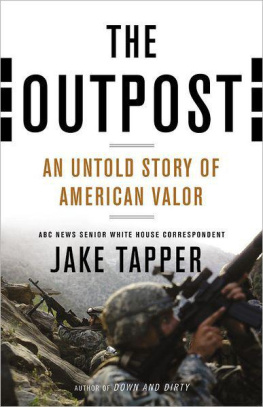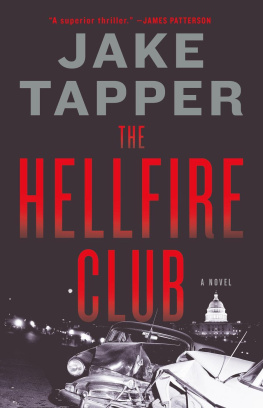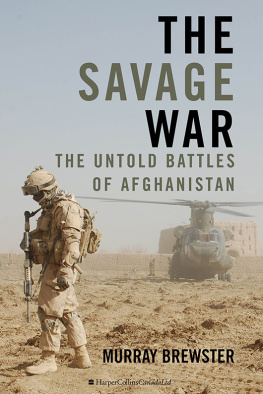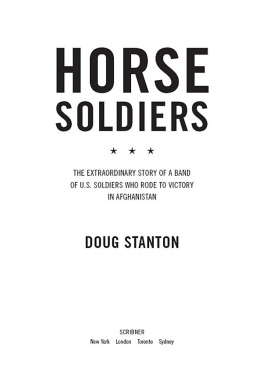
In accordance with the U.S. Copyright Act of 1976, the scanning, uploading, and electronic sharing of any part of this book without the permission of the publisher constitute unlawful piracy and theft of the authors intellectual property. If you would like to use material from the book (other than for review purposes), prior written permission must be obtained by contacting the publisher at permissions@hbgusa.com. Thank you for your support of the authors rights.
For Mom
The most difficult choice I faced in writing this book lay in deciding how honest to be about the horrors of war: the injuries, the deaths, all the things that make war so terrifying. The media in the United Statestaking their cue from the American publicoften shy away from such coverage, and that has not served the nation well, to say nothing of the troops or the people in those countries that the U.S. government says its trying to help. Certainly, however, there are good reasons to avoid descriptions that are too graphic, including, primarily, the desire to shield families of troops who have been wounded or killed from details that may be new and upsetting to them. Ultimately, with all of this in mind, I opted to withhold some informationbut not a lot.
Halfway down the trail to Hell,
In a shady meadow green
Are the Souls of all dead troopers camped,
Near a good old-time canteen.
And this eternal resting place
Is known as Fiddlers Green.
Marching past, straight through to Hell
The Infantry are seen.
Accompanied by the Engineers,
Artillery and Marines,
For none but the shades of Cavalrymen
Dismount at Fiddlers Green.
Though some go curving down the trail
To seek a warmer scene.
No trooper ever gets to Hell
Ere hes emptied his canteen.
And so rides back to drink again
With friends at Fiddlers Green.
And so when man and horse go down
Beneath a saber keen,
Or in a roaring charge of fierce melee
You stop a bullet clean,
And the hostiles come to get your scalp,
Just empty your canteen,
And put your pistol to your head
And go to Fiddlers Green.
Anonymous
Focus
I t was madness.
At Jalalabad Airfield, in eastern Afghanistan, a young intelligence analyst named Jacob Whittaker tried with great difficulty to understand exactly what he was hearing.
The 10th Mountain Division of the United States Army wanted to do what?
Whittaker had to choose his words carefully. He was just a low-ranking specialist with the Idaho National Guard, a very low man on a very tall totem pole. A round-faced twenty-six-year-old, Whittaker had simple tastesBoise State football, comic booksand a reputation for mulishness belied by his innocent appearance.
Whittaker stared at his superior officer, Second Lieutenant Ryan Lockner, who was running this briefing for him and Sergeant Aaron Ives. Lockner headed intelligence for Task Force Talon, the Armys aviation component at Jalalabad Airfield, in Nangarhar Province, adjacent to the Pakistan border. Military leaders considered this area, officially designated Regional Command East, the most dangerous part of an increasingly dangerous country.
Lockner had an assignment. Soldiers from the 10th Mountaina light infantry division designed for quick deployment and fighting in harsh conditionshad recently come to this hot corner of Afghanistan and would soon be spreading throughout the region, setting up outposts and bases. More specifically, they would be establishing a camp in Nuristan Province.
The members of the intelligence team led by Lockner didnt know much about Nuristan, as U.S. forces had generally been focusing their efforts on Kunar Province, which had become a haven for Taliban insurgents and foreign fighters sneaking in from Pakistan to oppose the American infidels. During one operation in Kunar the previous summer, in 2005, nineteen U.S. troopsSpecial Forceshad been killed by such insurgents, and since then, the United States had increased its presence there. Helicopters flying in and out of Kunar Province were fired upon at least twice a week, every week, with small arms and/or rocket-propelled grenades (RPGs).

Nuristan was farther north, a province so mythically untamed that one of the greatest writers of the English language, Rudyard Kipling, had chosen it as the setting for his 1888 novella The Man Who Would Be King. One of Kiplings British adventurers, Daniel Dravot, describes Nuristan as a place where no one has gone and they fight, and in any place where they fight a man who knows how to drill men can always be a King. Youll be cut to pieces before youre fifty miles across the Border, warns Kiplings narrator. The people are utter brutes, and even if you reached them you couldnt do anything.
The regions previous brigade commander, Colonel Pat Donahue, hadnt thought Nuristan had much strategic value, so conventional forces hadnt been posted there, and no one had troubled to find out much about the native people, the Nuristanis, a distinct and outlying ethnic group within Afghanistan. In a departure from his predecessors policy, Donahues replacementColonel John Mick Nicholson, the commander of the 10th Mountain Divisions 3rd Brigade, known as the Spartan Brigadeordered the establishment of small outposts throughout the area in the summer of 2006, in an attempt not only to stop the Taliban fighters who were streaming in from Pakistan, often with bushels of weapons, but also to win over the locals, who were predisposed to a suspicion of outsiders.
Lockner had just returned from Forward Operating Base Naray, in Kunar Province, where hed met with officers of the 10th Mountain Divisions 3rd Squadron, 71st Cavalry Regiment, or 3-71 Cav. A small settlement missing from most maps, Urmul was home to fewer than forty families of Nuristanis, or roughly two hundred people, who lived in houses made of wood and rock and mud sealant. The residents were primarily subsistence farmers trying to eke out a living through both crops and livestock, but the U.S. Army knew little more than that about them. Coalition forces likewise had next to no intelligence about the enemy in Nuristanits numbers, its location, its intentions, or, most important, its capabilitieswhich was one of the reasons the brass was pushing to build a base there. This was the essential difficulty of the task at hand: the higher-ups in the U.S. Army needed to know about the enemy in this unexplored province, so in order to learn as much as they could, they were going to stick a small group of troops in its midst. For all Lockner knew when he flew over Urmul to reconnoiter, the hamlet might have been Osama bin Ladens secret compound.
Theyre going to build another outpost, Lockner told Whittaker and Ives back at Jalalabad Airfield. So I need you to take this terrain analysis I started, finish it, and make it pretty so I can brief it in the morning. Many troops were far more proficient in PowerPoint than they were with firearms, so Whittaker understood just what Lockner meant by make it pretty: the slides for the presentation needed to look crisp and to make a compelling case.
Where are they going? Whittaker asked.
Lockner gestured at the topographical map. Right over here, northwest of Naray, he said. Where the Darreh ye Kushtaz and Landay-Sin Rivers meet.
Whittaker looked at the spot, stunned. Right there?
Next page







